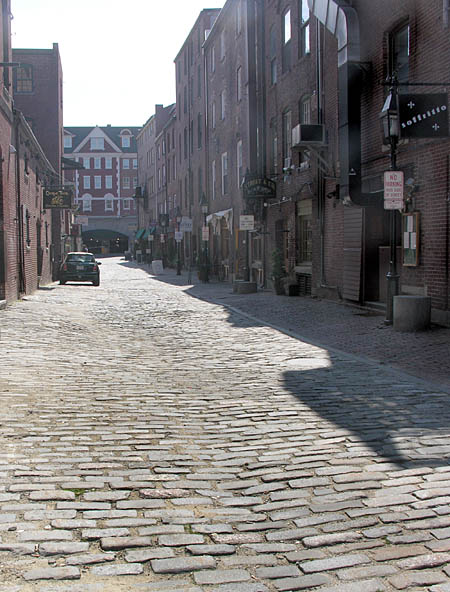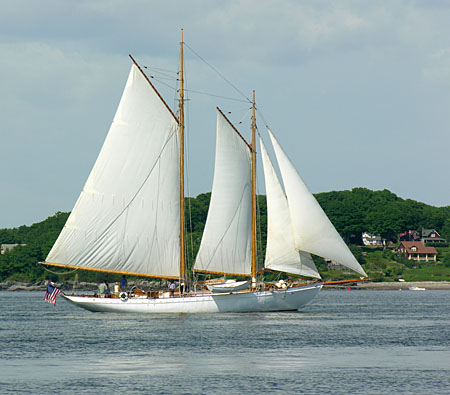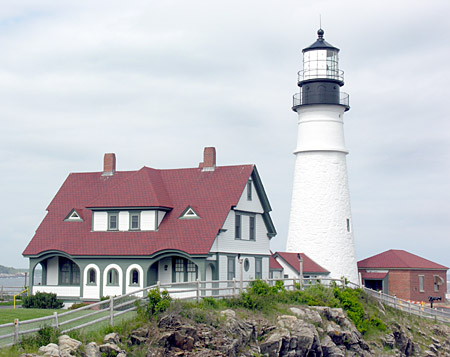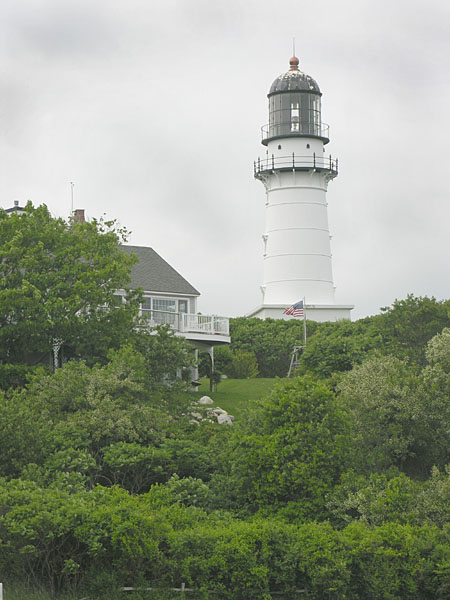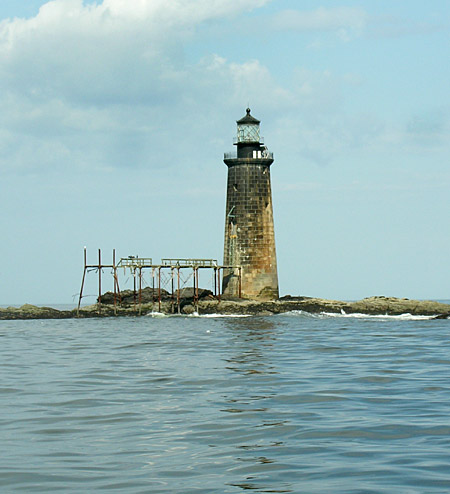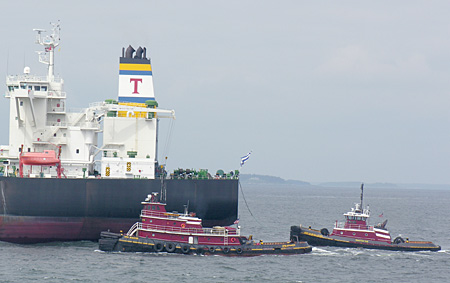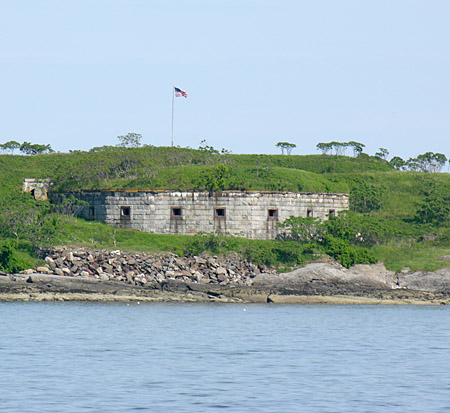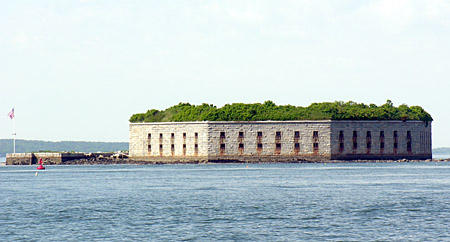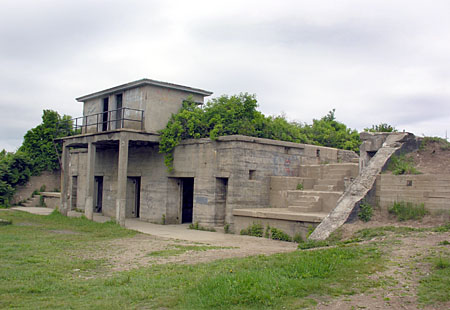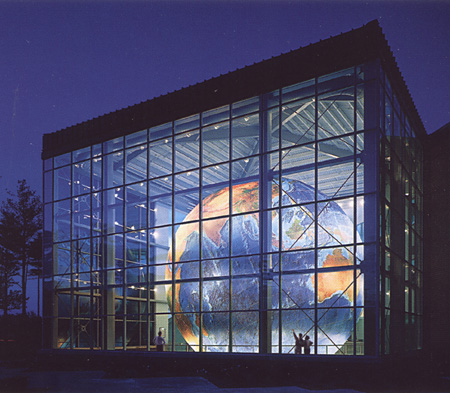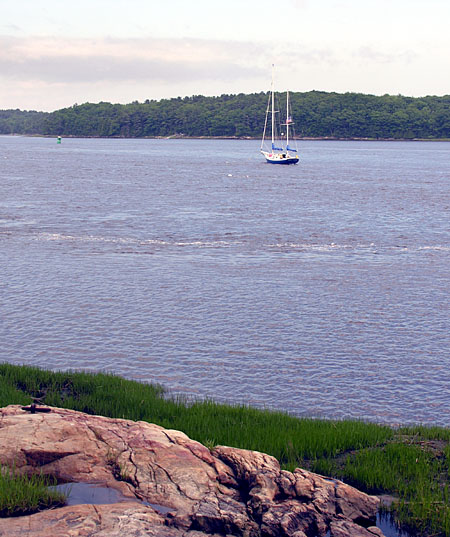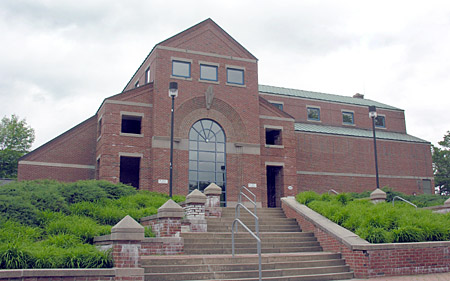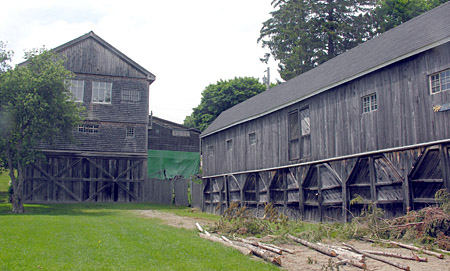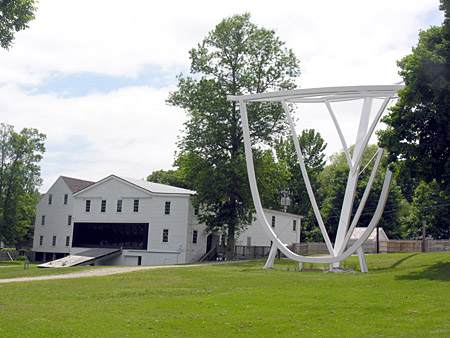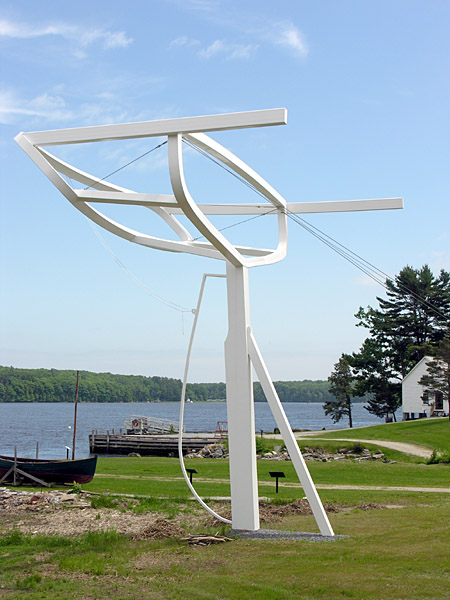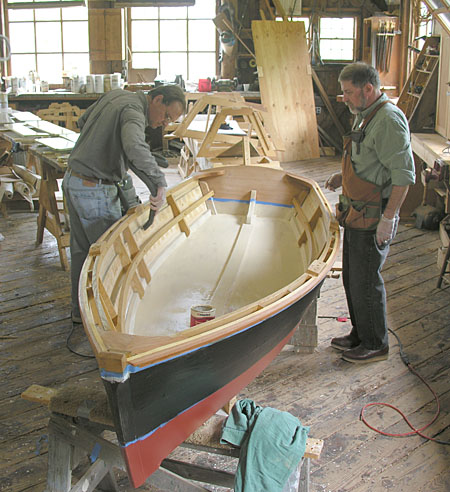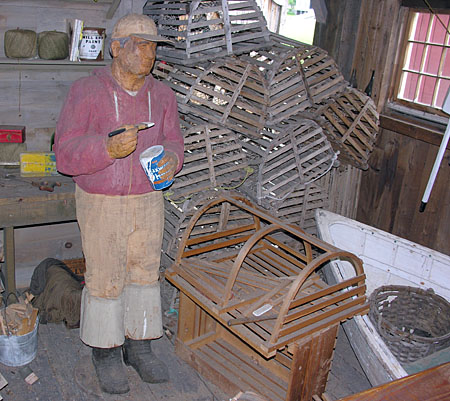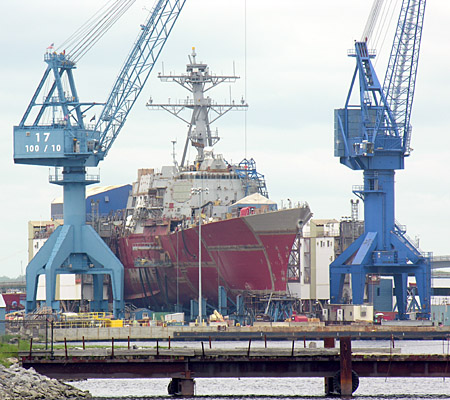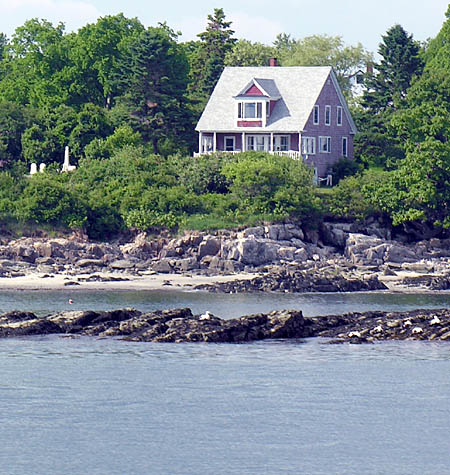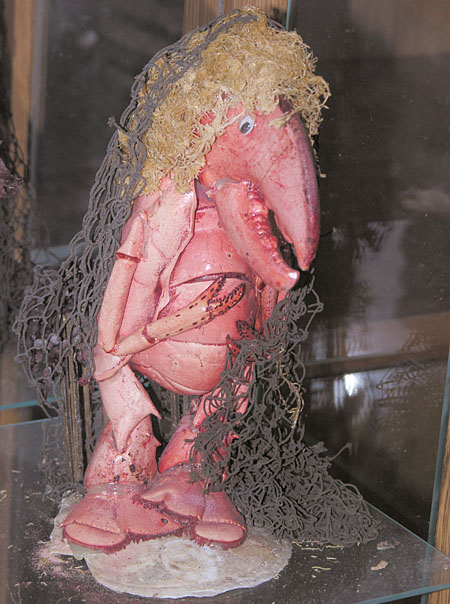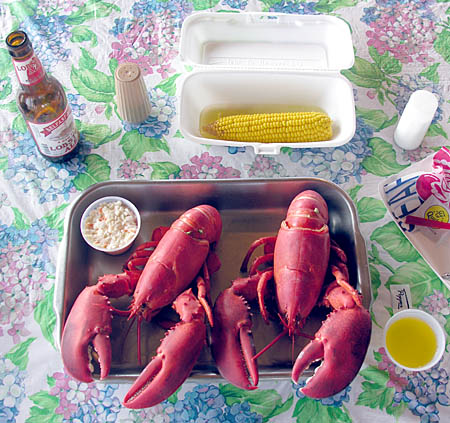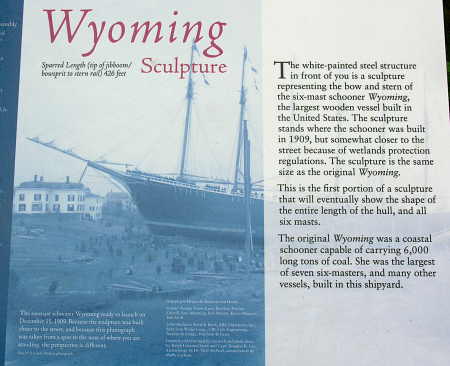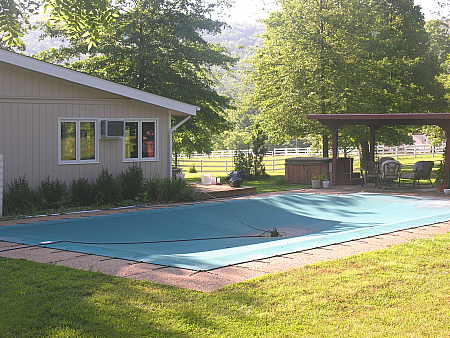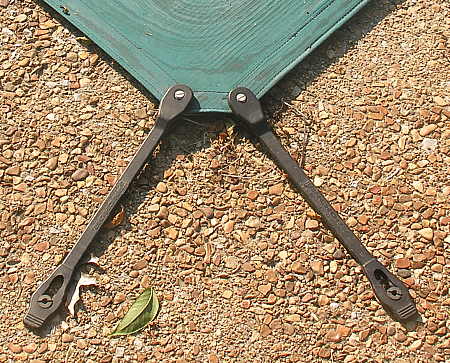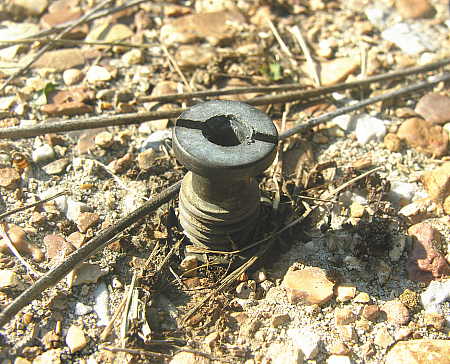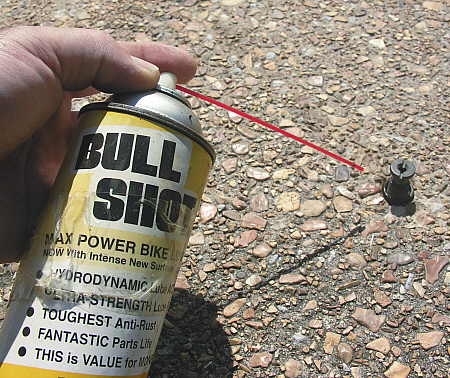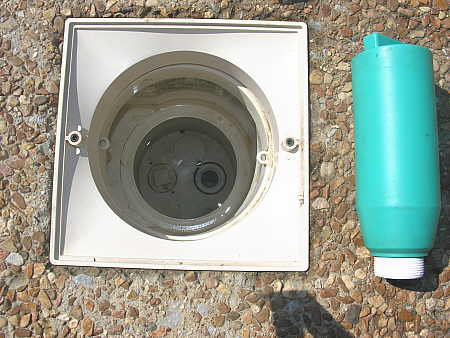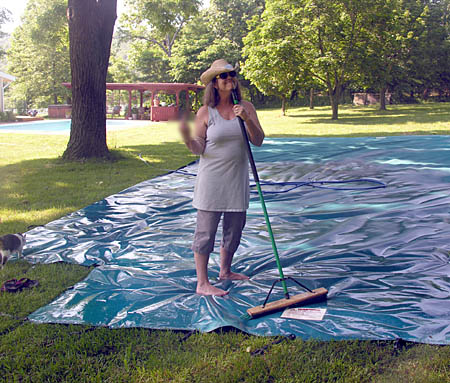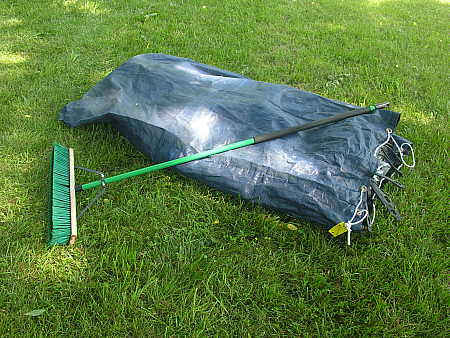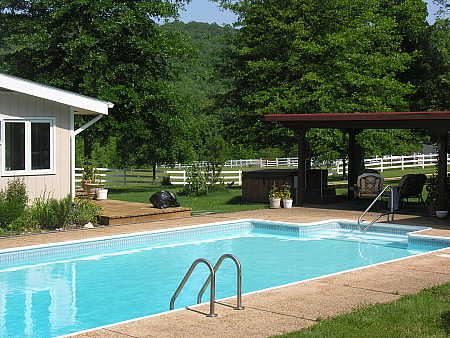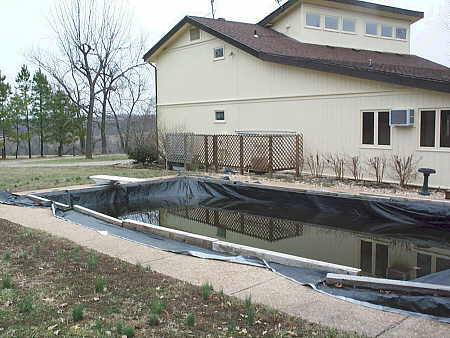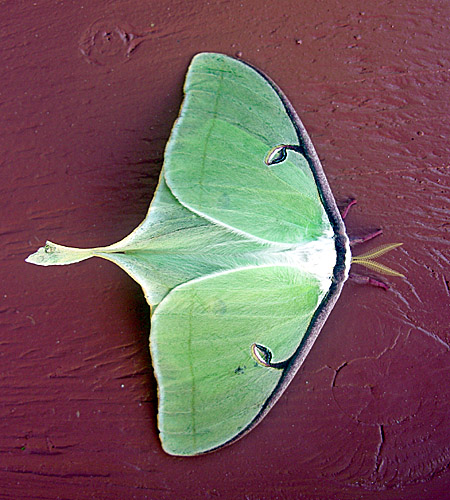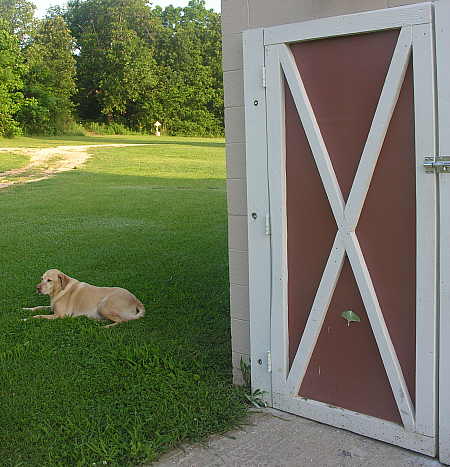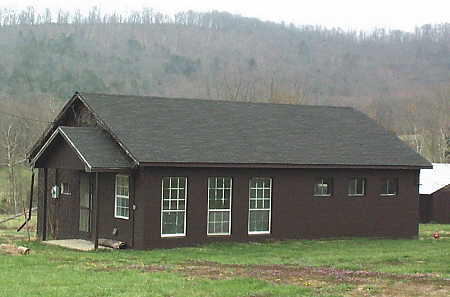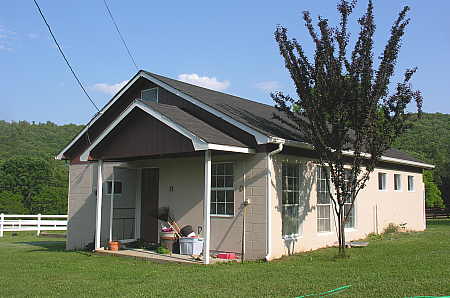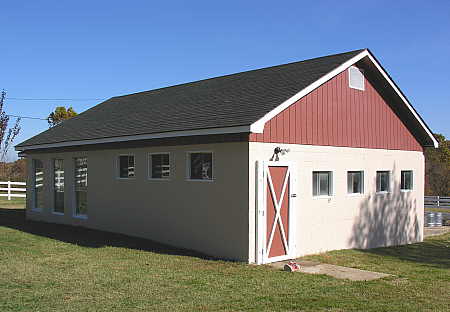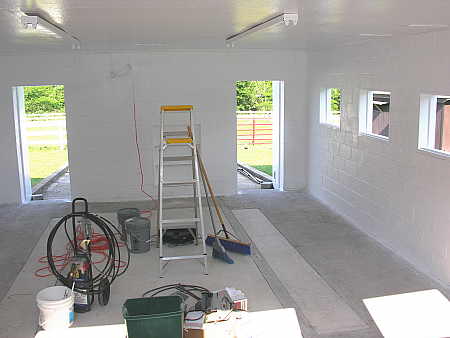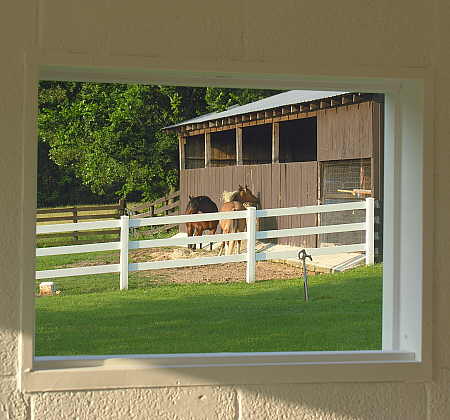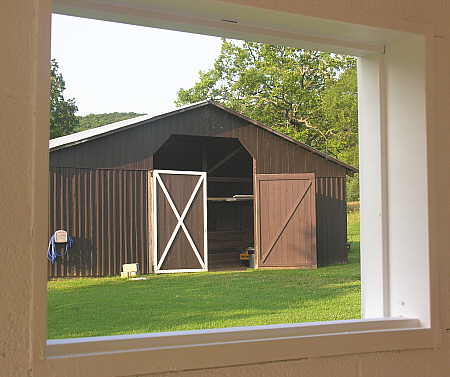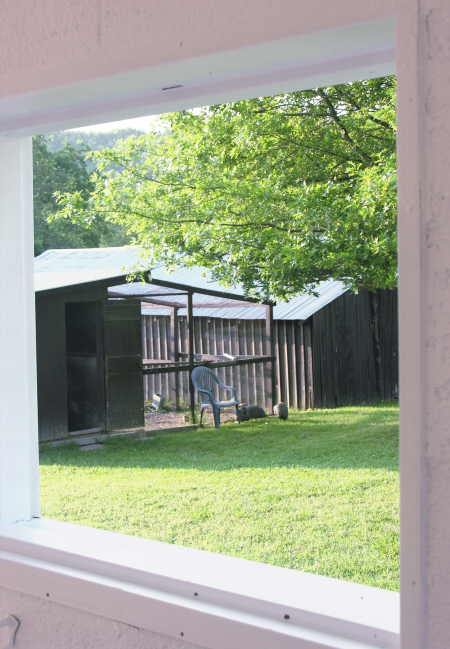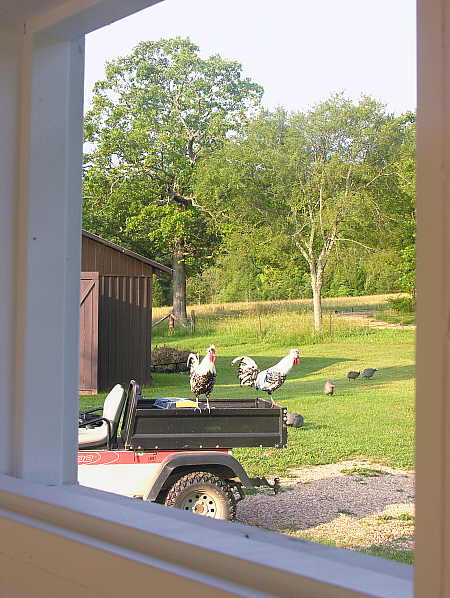Once again, I seem to have strayed off the farm, so here I am with yet another travelogue, rather than my usual ranch type ramblins.  Let’s start off in the wharf district of Portland, Maine, where I was surprised to find that cobblestone streets still exist.
There are many fine shops and restaurants in the wharf area, and there are numerous opportunities to take part in “touristy” activities, as well. Having a little salt in my blood, I opted to focus on things with a maritime flavor, so I decided to take a sightseeing cruise on Casco Bay, which is where Portland, Maine is located.
Casco Bay is a lovely and picturesque body of water, where you are certain to cross paths with a variety of interesting vessels, such as the schooner seen in the preceding photograph.
Casco Bay and the surrounding waterways are dotted with many navigation lights, some with lighthouses, such as the Portland Head Lighthouse seen above.Â
Another light with a house on the grounds is the Cape Elizabeth Light (seen above), located in what is called the “two lights” area of Cape Elizabeth.
There are several lights that are located on islets or rocks within the waterways. This one, called the Ram Island Ledge Lighthouse has a boat launching pier for access to the light. The light is now automatic, however it used to be manned in shifts of two-week duration. That is, except for those stormy occasions when ocean conditions might strand the keeper for many weeks at a time!
Whether manned or automatic, the purpose of the lights is to keep vessels off the rocks. In the photograph above, you can see two tugboats racing to catch up with a tanker ship headed into Casco Bay. After passing the Portland Head Light, they will assist the tanker in the berthing process.
There are many Civil War era forts located in and around Casco Bay, such as this land based fort seen above.
There are also island based forts located in Casco Bay, such as Fort Gorges, which was active from 1857 until 1946.
Down in Cape Elizabeth you can hike around the remnants of Fort Williams, which saw active use from 1872 until 1963. Nearby is the Portland Head Lighthouse, which offers a fine museum for visitors.
If you head northeast out of Portland, you will soon come to the town of Yarmouth, and if you pay close attention, you are liable to see the world’s largest rotating and revolving globe! Located in the DeLorme Headquarters, this globe is name Eartha, and is the largest printed image of the Earth ever created (photograph courtesy of The Map Store). The globe has a circumference of nearly 130 feet and a diameter of over 41 feet. It represents one of the largest computer mapping databases in the world. The printed data comprises 140 gigabytes of information.
Continuing on from Yarmouth along Highway 1, you eventually come to Bath, Maine. Bath is situated on the banks of the lovely Kennebec River, and because the banks along this deep river slope gently, and because deep water lays close to shore, this location has been utilized as a shipbuilding area for quite some time, hence Bath’s nickname – The City of Ships.
To commemorate and preserve the shipbuilding heritage of the region, the citizens of Maine have contributed time and money to create the Maine Maritime Museum, which houses an amazingly vast collection of maritime paraphernalia and artwork.
Located at the site of the historic Percy & Small Shipyard, the campus of the Maine Maritime Museum contains many buildings to house the collection. Above are portions of the old Boatshop.
The white building is the Mill and Joiner Shop, where authentic shipbuilding machinery is on display for visitors to see. The large white skeleton that you see is a mock-up of the stern bow section of the schooner Wyoming, which was the largest wooden vessel ever built in America. The skeleton sits in the old shipyard exactly where it was originally built (except for being slightly upslope from the shore, for environmental reasons).
Looking in the other direction, you now see the mock-up of the bow stern section of the Wyoming. It is difficult to get a sense of scale and perspective from these pictures. Let me just assure you – this vessel was huge!
On a smaller scale, these two craftsmen were putting the finishing touches on a traditional Maine “Susan” boat.  Although these men are painting the boat, the boat itself was built by the Bath, Maine sixth-grade class from September 2006 until May 2007. This boat will be raffled off to some lucky ticket holder, and the proceeds from the raffle benefit the Maine Maritime Museum.
The Museum has a wonderful exhibit entitled “Lobstering and the Maine Coast.” Within this exhibit (which is housed in it’s own building) you will find displays covering all aspects of the lobster fishery and trade, beginning with it’s early origins and continuing to today’s methodologies.
Did you know that in the early days, lobster were so plentiful that they washed up on shore? And that local officials decided to harvest the washed-up lobsters to feed inmates in the local jails and prisons? And that the inmates, becoming sick from having to eat lobster morning, noon and night began rioting and creating havoc? Imagine – protesting regarding TOO MUCH lobster???
Anyhow, back to the Bath, Maine area. You are looking at a destroyer that is currently under construction at the Bath Iron Works, which is a General Dynamics company. This facility builds the Arleigh Burke Class AEGIS guided missile destroyers for the U.S. Navy.  Bath Iron Works, in conjunction with the Maine Maritime Museum, conducts tours of the Bath Iron Works (on a limited basis). I was fortunate to get on a tour, but I cannot share any pictures of the experience with you, because cameras and photography are prohibited while on the grounds of the shipyard (or at any other defense contractor’s location) for security reasons.  I can say, however, that the tour was well worth taking. The size and scope of the fabrication process that you can see here is absolutely amazing.
Eventually, with all of the sightseeing and walking around, you are bound to get hungry. Poking around all the coves and inlets brings you into a lobster fishing village or two, where you are sure to run into the local lobster shack, which can be as simple as a converted bungalow, like the one you see in the picture above. So are you ready for some famous live Maine lobsters?
No, not like this lobster (which is the work of the proprietors of the Estes Lobster House, located at the bottom of beautiful Harpswell Neck).
This is more like what I had in mind. In my humble opinion, this is the perfect Maine dinner. Two steamed whole Maine lobsters, accompanied by corn-on-the-cob, cole slaw, drawn butter, and of course, a bottle of the locally brewed Lobster Ale.
Now that’s what I call eating!
UPDATE -Â December 20, 2007
George Rolt commented that my captioning of the bow and stern sections of the schooner Wyoming was in error. An examination of a launch day photograph included in the following information sign at the Maritime Museum shows that George is correct. I have corrected the post accordingly.


